|
Click HERE to see an animated picture. |
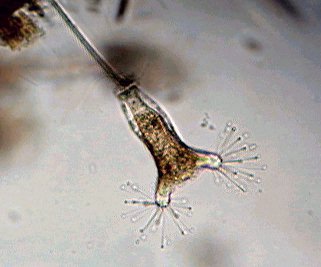 |
|||
|
|
||||
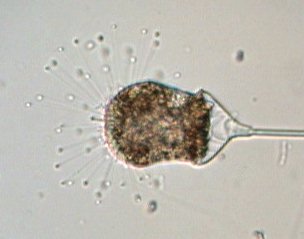 |
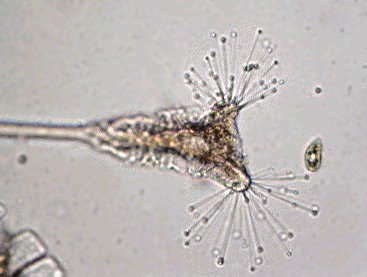 |
|||
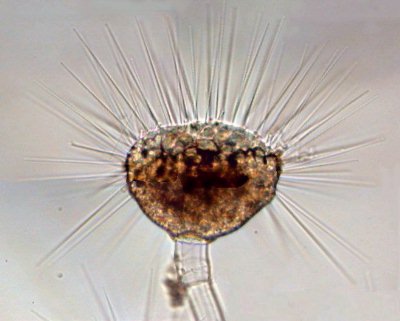 |
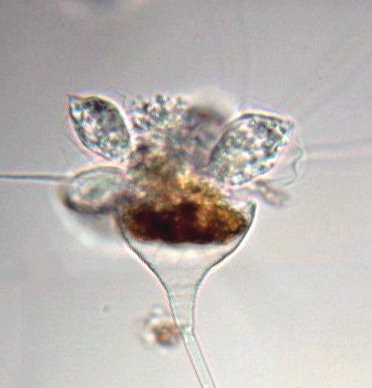 |
|||
| When another protozoan touches one of these sticky disks it remains glued and immediately other tentacles are brought into play to immobilize it. Then a strange ballet begins if you observe carefully: first, disks seem to dissolve the protozoan cell membrane, then a sort of granulated flow is seen along each tentacle from protozoan toward the suctoria, as if the protozoan cytoplasm was transferred little drops by little drops. In a few minutes, the entire cytoplasm of the prey is phagocytized through the suctorian tentacles! At the same time, cilia of the protozoan stop moving, and some minutes later, an empty and retracted membrane of the protozoan is rejected. You don't believe that is possible? Look at the animated picture shown right taken in only five minutes of real time! | 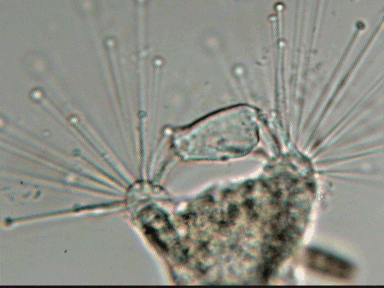 |
|||